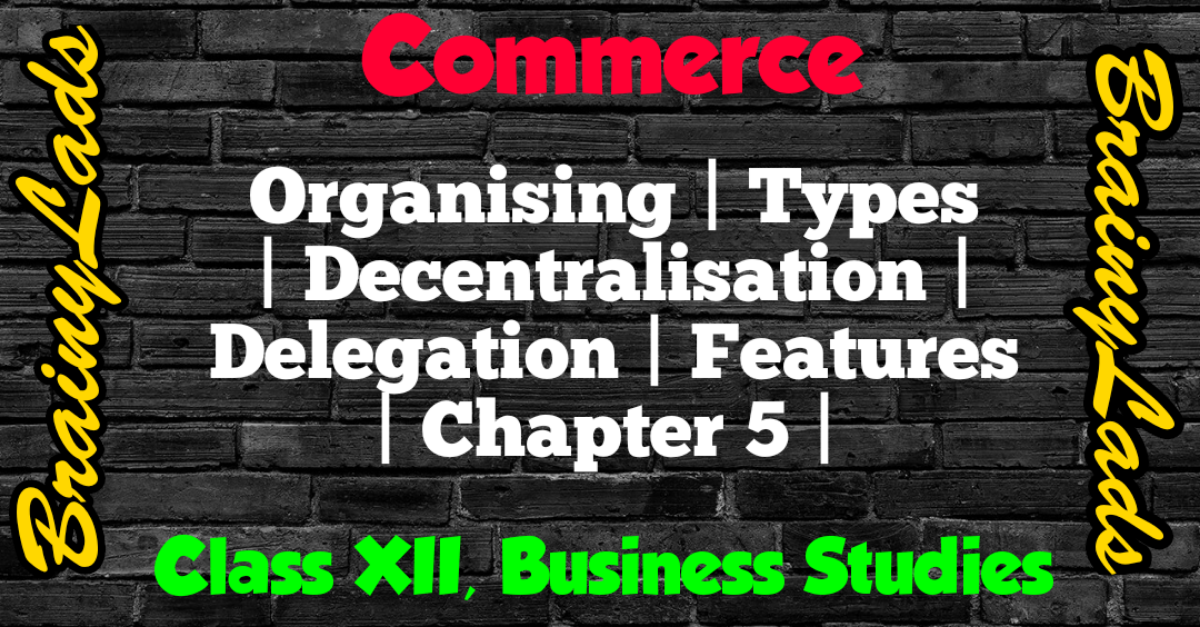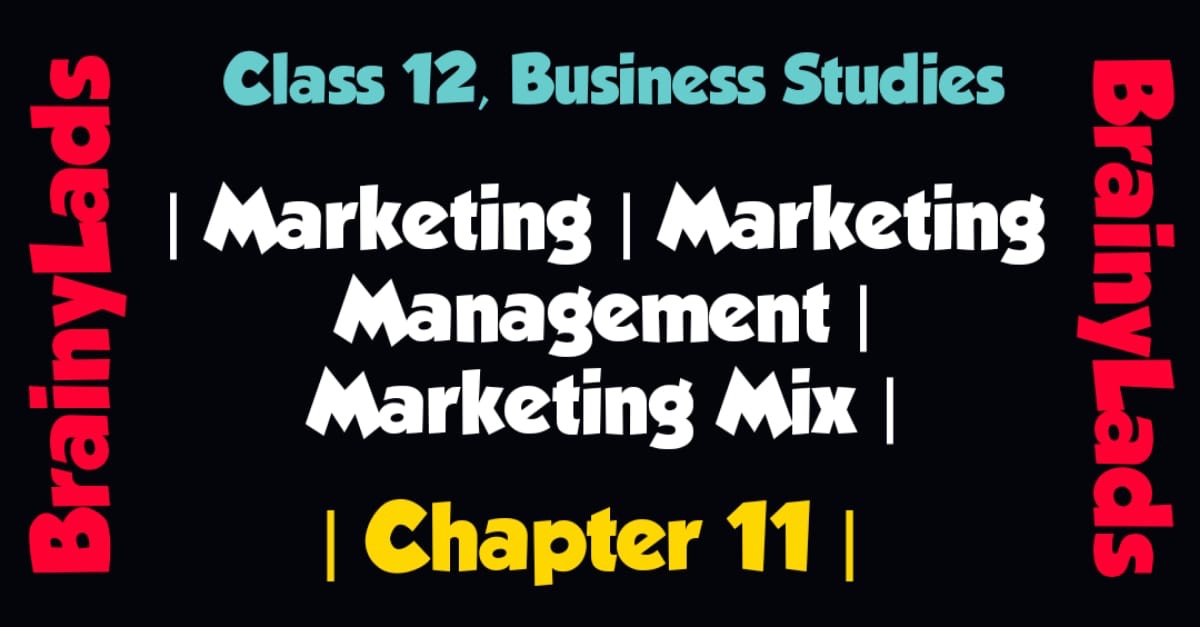Directing Class 12 | Supervision | Motivation | Communication | Chapter 7 |
Table of Contents
Directing Class 12 | Supervision | Motivation | Communication | Chapter 7 |
Meaning and Concept of Directing
Directing Class 12 : Directing refers to instructing, Inspiring and communicating with people so that the objective of the organisation can be achieved. It involves managing of the people in an organisation but managing is a wider concept whereas directing is a litle part of that.
Features of Directing
- Executive Function: Directing function is performed at all the levels wherein subordinates receive instructions from their superior in order to complete the allotted work.
- It is all Pervasive: Directing is a function which is performed at every level of management as every subordinate needs motivation, instruction for his work.
- Continuous in Nature: The work of a manager is not ended-up by only giving instructions to their subordinates. In order to fulfill the task efficiently, he has to keep on guiding, motivating and communicating with subordinates to increase their morale and efficiency.
- Delegate Function: Directing is the function which flows from top to bottom in terms of instructions so that work can be divided and organisational goals can be achieved easily along with morale of employees.
Significance of Directing Class 12
- Implements Changes: An organisation works in a dynamic environment therefore the structure of organisation keeps on changing. However, an organisation with full of motivated employee and correct communication system can adopt changes very speedily.
- Effort of All Employees: Directing builds coordination between the activities in order to do all the work efficiently so that goals of the organisation can be achieved.
- Acts as Motivation: It motivates the employee to work efficiently and to put more efforts in order to work more efficiently.
- Stability in Organisation: With the help of directing, an employee can make a balance between the organisational interest and individual interest so that both of the interests get fulfilled.
Elements of Directing Class 12
- Supervision: It refers to the process of monitoring the routine work of the subordinate in order to guide them properly.
- Motivation: It refers to the process wherein the morale of the employee is increased through various methods in order to attain the desired objective of the organisation.
- Leadership: It refers to the process of influencing others so that they can do the exact same work which their leaders ask them to do.
- Communication: It refers to an art of transferring facts, ideas etc. to another person along with making them understand.
NOTE: Detailed discussion about all of them is given below.
Meaning of Supervision
The word supervision means the best view. It includes monitoring the routine work of the subordinates and guiding them so that they can work more efficiently.
Features of Supervision:
- Universal in Nature
- Chief Part of Directing Function
- Continuous in Nature
- Optimum Utilisation of Resources
Supervisor – Meaning and Role
Supervisor is the person who looks into the work done by the subordinates and gives instructions in order to utilize the resources optimally.
- Key-man: A supervisor makes plan and puts them in action for the non-managerial levels for it is one of the most crucial level, where a small mistake can cost the organisation dearly. Therefore, he makes plans and listens to workers regarding the policies and his plans.
- Mediator: A supervisor makes cooperative atmosphere between the top level management and the workers so the goals of the organisation can be achieved.
- Human Relations Specialist: A supervisor solves all the problems related to change in human behavior.
Note: A supervisor performs all the above functions at the same time.
Functions of Supervisor
- Assures Control: A supervisor has a close eye on the work of the subordinates so that he can take corrective actions for the flaws which emerge during work in progress.
- Optimum Utlisation of Resources: A supervisor monitors all the activities of an organisation closely so that best plans can be made and utilisation of all the resources can take place optimally in an organisation.
- Increases Morale: A supervisor divides the work in such a manner that the responsibility can also be divided and every employee can feel himself as a part of the organisation.
- Maintain Discipline: A supervisor keeps a strict view on subordinates and teaches them about the discipline and builds pressure on them to maintain it.
Meaning of Motivation
Motivation is an important function of a manager. It refers to encouraging the hidden will-power of an individual for his work so that he can work more efficiently. It is a fire-butter-flame relationship.
Features of Motivation
- Internal Feeling: It is a psychological concept whereby the behavior of an individual gets affected.
- Complex in Nature: Every person has different needs. Therefore, different level of motivation is needed for different persons.
- Either Positive or Negative: In an organisation, the employees who are laborious, get positive motivation whereas those who are work shirkers get negative motivation so that both of them can work easily.
- Change in Behavior: Motivation changes the behavior of an employee by encouraging his hidden will power to achieve the goals of the organisation.
Types of Incentives
- Financial Incentives: It is also known as monetary incentives. It refers to those incentives which are directly in the form of money and can be easily measured in terms of money and are needed for physiological satisfaction.
- Allowances
- Co-partnership
- Bonus
- Sharing of Profit
- Incentives
- Non-financial Incentives: It is also known as non-monetary incentives. It refers to those incentives which are not directly in the form of money and are needed for social, esteem satisfaction.
- Job Enrichment
- Recognition
- Status
- Security of Job
Maslow’s Need-Hierarchy Theory
Abraham Maslow was the first person who presented the need-hierarchy theory of motivation in 1943 which is based on five human needs and can be categorized on the basis pf priority.
The five human needs:
- Physiological Needs: These are those needs which are required to keep a man alive like food, shelter, cloths, sleep etc.
- Safety or Security Needs: It can be further categorised into two i.e. physical safety in which he can defend himself from accidents, diseases etc. and economic safety in which he can secure his livelihood and arrangements can be made for old age
- Affiliation or Social Needs: It refers to those needs which show sense of belongingness, affection and friendship.
- Esteem Needs: It refers to those needs which are required for respect, status recognition, autonomy and attention in the society.
- Self-actualisation Needs: It is the maximum that one can need and includes maximization of potential which an individual has.
Assumption of Maslow’s Theory
- The behavior of people is affected by their needs.
- An individual may have many needs.
- The higher need serves as a motivator for motivation ends with the satisfaction of needs.
- People move to higher need only when the lower level needs are satisfied.
Criticism of Maslow’s Theory
The criticisms of Maslow’s Theory under which it fails to reflect the exact need, which are as follow:
- The needs of person change according to the situation which shows that the Maslow’s hierarchy of needs are not permanent.
- If a person moves to a higher level need, it does not mean that the remaining needs are unimportant to him.
Meaning of Leadership
It refers to inspiring or influencing others in such a manner that they can work with more dedication and greater enthusiasm and can do what the leader wants them to do. A leader refers to the person who exercises his influence on the group of person and makes them work with full confidence to attain the objectives of the organisation.
Features of Leadership
- Influencing Process: Influencing refers to the process of bringing other under one’s influence. A leader behaves in such a manner that others automatically get influenced form him and start working as they are told by their leader.
- Goals Achievement: The process of leadership not only helps in achieving organisation goals but individual goals are also achieved.
- Relation between Leader and Followers: The measure requirement in a leadership is the presence of followers by which the leadership becomes meaningful.
- Continuous Process: Leadership is not a kind of thing which is needed for one but it is needed every time and manager has to use his leadership qualities in order to achieve the goals of the organisation.
Styles of Leadership
Autocratic Leadership Style: This style is also known as leader-centred style under which the leader tends to handle all the situation himself.
- Features
- The authority of work performance is with the leader.
- It works in those organisation where employees are motivated by controlling.
- Only the leader has the right to take the decision and the communication flows downward that is from superior to subordinate.
- Merits
- The decision making is quick and clear.
- The level of satisfactory work is high.
- Useful in those organisation in which employees are less educated.
- Demerits
- This type of style decreases the morale of the employees.
- Employees tend to work like machines instead of humans.
Democratic Leadership Style: This type of style is also known as group-centred style. It refers to the style wherein the leader consults with his subordinates in order to make final decision.
- Features
- It includes participation of every one.
- The leader has belief in the employees.
- The communication is open among the leader and the subordinates for it has two way communication.
- Merits
- Increases the morale of the employees.
- The efficiency and the productivity level of the subordinates increases the work load of the leader decreases.
- Demerits
- It requires educated subordinates
- The decision making may be delayed for leader has to consult with his subordinates.
Laissez-faire Leadership Style: This type of style is also known as free-rein style or individual-centred style. It refers to that style in which the leader does not interfere in the decision made by the subordinates and sets them completely free in order to determine their own objectives.
- Features
- The leader has full faith on subordinates.
- Every subordinate has the right to make independent decision.
- The whole authority is decentralized among the subordinates.
- Merits
- It leads to increase in the self-confidence among the subordinates.
- The level of motivation is very high among the subordinates.
- Demerits
- Due to less supervision, the cooperation among the subordinates is very difficult.
- It requires employees who are highly educated.
Meaning of Communication
The word communication means common and refers to an art of transferring facts, ideas etc. to another person along with making them understand. It includes sharing of thoughts to others in such a manner that the listener can get the exact meaning which is possessed by the speaker.
Features of Communication
- Require Two or More Person: The most important function of communication is that it requires minimum two persons.
- Mutual Understanding: It means that the listener gets the same meaning of the idea which is possessed by the speaker.
- Continuous Process: Communication is an endless process.
- Includes words and Symbols: Many types of symbol, words are used to make the communication better.
Types of Communication
- Formal Communication: Formal Communication refers to the interchange of information within an organisation and is officially sanctioned.
- Features
- The path is prescribed.
- The channel of communication is established by the organisation.
- It is for those employees who have formal relation with the organisation.
- Merits
- The information flows only in a definite route which makes it more systematic.
- The source of information can easily be found.
- Demerits
- The information can be distorted as it passes through many hands.
- The faith of subordinate may get lost for effective communication.
2. Informal Communication: Informal communication refers to the interchange of the information within in an organisation and is not officially sanctioned. It is also known as unofficial communication.
- Features
- The social relation of the employees increases.
- Information in this type is like a wild fire.
- The path is of information is uncertain.
- Merits
- The information moves faster and effectively.
- It satisfies social needs of the workers.
- Demerits
- The information in this type is unrealizable.
- The source of the information can not be determined
Process of Communication
- Sender: A sender is the person who wants to send his idea, thought to some another person.
- Message: Under this, the sender creates a message and includes whatever he wants to say.
- Encoding: The sender will convert the message into communication symbols.
- Transmission: The sender will send the message by using medium of communication.
NOTE: The media of transmission should be free from noise.
- Receiver: A receiver refers to the person who receives the message.
- Decoding: To understand better, the receiver decodes the message.
- Feedback: The receivers gives his point to sender that he has understand the message or not.
Barriers in Communication and Measures to Overcome
- Personal Barrier: It refers to barriers personally related to the sender and the receiver.
- Unwilling to Communicate
- Lack of Confidence
- Organisational Barrier: It refers barriers related to the structure of the organisation.
- Policies of Organisation
- Structure of Organisation
- Rules and Regulation
- Semantic Barrier: It refers to barriers wherein the receiver gets the wrong meaning or feeling of the sender.
- Badly Message Expressed
- Different Meanings of Symbols and Signs
- Fault in Translation
- Psychological Barrier: It is also known as emotional barrier and related to the mental condition of both the parties.
- Lack of Attention
- Disturbance
We would love your reading of the other chapters given below.
|
|
# Directing Class 12
Do share the post if you liked Directing Class 12. For more updates, subscribe to our website BrainyLads



